Masonry Chimneys
Whether you’re a buyer, agent or home inspector the home can tell you a great deal before arriving. The listing pictures and Google earth are valuable tools to both the trained and untrained eye. If you are looking at a home with a masonry chimney built during a large swath of the 20th century, keep this article in mind when you are looking at the home. You will not even need a ladder or specialized equipment for these tips.
When you arrive for the showing as you approach the home ensure to check out the crown or top of the chimney. In the case of masonry chimneys, they are a great “litmus test” to gauge the homes conditions and provide insight about how the home has been performing and how well the home might have been cared for. Like all components of the home, the chimney has an interdependent relationship on other home systems and will adversely affect them if maintenance has not been regular. Chimneys have all elements of physics bombarding it, relentlessly, from the inside and outside. If the chimney houses a flue that is exhausting fossil fuel fired combustion in addition to wood fired combustion the need for proper care is even higher. Regardless of age, visual appearance of chimneys can provide great data for your decision making.
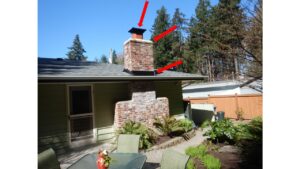
- If a home is on your list with a 20th century-built masonry chimney, ensure to get a good look at the Chimney cap and crown from pictures, the yard, or across the street. Try to determine if all of the chimney, and especially the flues, are properly capped. If both are capped, that is a great start! No chimney should be without a proper cap. Not all caps are created equal but that is another subject. Having a cap suggests that some level of proper chimney maintenance was performed, and someone made the good choice to properly cap the chimney. Keeping the elements from getting into the chimney is vital in ensuring the components do their job and reach their intended life span. Water regularly getting into the chimney is one of the most significant and prolific catalysts for repair needs. Having caps doesn’t ensure a trouble-free chimney but it is a great start and what you would like to see when considering a home.
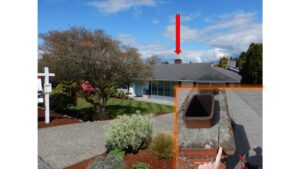
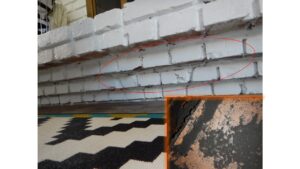
What to do if there are no caps? A masonry chimney that was part of any home built in the 20th century that is not properly capped should alert your “Spidey senses” to start tingling. In simple terms even a well-maintained chimney is still a hole in the house. There is no crystal ball to determine how the chimney has performed when not capped. The chimney’s location, exposure level, materials, construction method, and luck are just a few of the variables that will determine how the chimney performs. An uncapped and poorly maintained chimney will not only affect the chimney but if the condition has gone on long enough, there will be a ripple effect outward from the chimney that affects other home systems and interior finishes. When you are viewing a home with an uncapped chimney here are some steps you can take to gather data to gauge how severe a condition might be. Alert your agent and home inspector to what you noticed so that they too can help with experience and insight. I can’t stress this one enough. Collectively a good agent and inspector should be able to answer the following questions:
What is the chimney exhausting? Is it a wood burning appliance? Is it a fossil fuel fired appliance? Which flue is for which? The answer to these questions can provide great insight to the type of use and what the chimney has been subjected to over its life.
What is the appearance of the masonry materials (brick, mortar, etc)? Are there signs of cracking or other failure to the masonry?
Did you notice white powder? This is called efflorescence which is the mineralization left behind when moisture evaporates after passing through a medium. This can be on or around masonry components of the chimney and fireplace.
Does the basement or ground level fireplace room have a musty smell to the room?
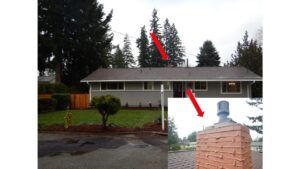
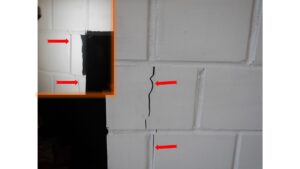
As a home buyer you can look for the cues when you’re looking at pictures. Masonry chimneys are a great cue as they can shed light on not only how the materials are performing but can also tell you how the house has been maintained. When you’re looking at a 20th century built home with a masonry chimney the chimney might be one of the few or only original components that remains. By this age the roof and siding will likely all have been replaced. Remember, is the chimney capped? How does the chimney look?

